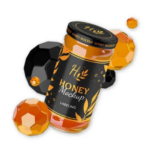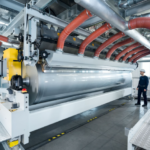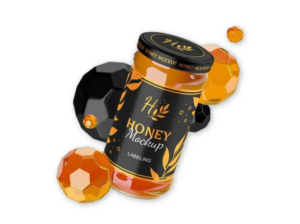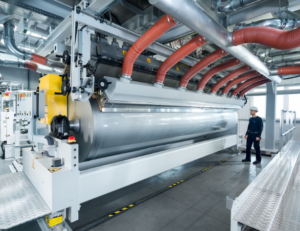Polyethylene, also known as polythene and abbreviated as PE, is by far the most commonly used polymer in the flexible packaging space. Thanks to the film’s low cost and an immense range of versatile properties, polyethylene stays the frontrunner in the food packaging industry as well. Low-Density Polyethylene (LDPE) and High-Density Polyethylene (HDPE), Linear Low-Density Polyethylene are among the most common variants of polyethylene. Several other sub-types of PE have varying degrees of thickness, densities, and other properties.
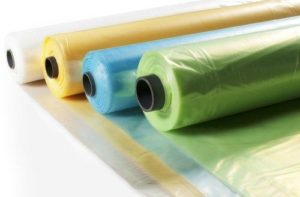
Image from www.indiamart.com
Properties like high chemical and impact resistance, low coefficient of friction, lightweight, and little to no moisture absorption make polyethylene films an excellent choice in flexible packaging. In fact, in 2019 alone, the estimated production volume of polyethylene was around 22.67 million metric tons. From wraps to bags and sacks to pouches, polyethylene films can be molded in a host of different packaging materials.
Read on to find out more on why polyethylene film is so popular in the flexible packaging industry.
PE Films are Economical
Cost plays a crucial role in the packaging industry. Since a lot goes into creating plastic films, cost-effectiveness stays the most predominant factor in the popularity of particular packaging material. Both the companies and the final end-user look out for products that aren’t just of high-quality, but also light on pocket. The production of polyethylene films requires very little energy and time, which helps protect the environment and makes the entire process super quick.
They are Lightweight
PE films are among the most lightweight polymers out there. It’s because the manufacturing of polyethylene relies on the chemical branching of carbon atoms, which in turn determine the density and molecular weight of its film. The more the denser a polymer, the heavier it will be. The beauty of polyethylene lies in the fact that it can be processed with very low pressure and temperature conditions, resulting in a film with intensely low molecular weight distribution. Overall, it is a packaging material that is super light in weight.
Polyethylene has High Malleability
Malleability is the most important property for flexible packaging films. Since the intermolecular structure of polyethylene is processed as a less compressed unit, it stays lightweight and provides adequate room for the movement of the film. In terms of lightweight structure, LLDPE stays on the top as its chemical structure has a very narrow distribution of molecular weight. The linear structure of the LLDPE film, along with its lightweight, makes it a highly malleable compound with no compromise on polymer strength.
They Prevent Moisture Absorption
Polyethylene is a non-polar polymer, meaning it has no affinity for water. Due to this property, PE packaging films act as perfect moisture barriers. This is particularly important in the food packaging space, where moisture acts as an ideal medium for microbial growth and physical harm. By preventing moisture absorption, polyethylene helps extend the shelf life of packaged foods and perishable goods.
They have Good Impact Resistance
Polyethylene, especially the High-Density Polyethylene, exhibits strong impact resistance and tensile strength. Being a high density polymer, the molecules in HDPE are tightly packed together, which imparts them inherent strength, toughness, and rigidity.
PE Films are Stable in Cryogenic Environment
Most plastics tend to become rigid, stiff, and brittle when cooled from room temperature to cryogenic temperatures. PE outshines most other polymers with its high stability in cryogenic environments.
PE are Approved by FDA and USDA
FDA being the global regulatory body for safe production and storage of food and drugs, has already approved polyethylene as a packaging material for foods. Both HDPE and LDPE are FDA compliant packaging materials because of their chemical resistance and moisture prevention properties. In addition, LDPE provides the added benefits of protecting the contents of foods as it doesn’t leach harmful toxins. Finally, PE tends to be stable at a wide temperature range, which is again one of the reasons why the FDA approves PE films for food packaging. The USDA Food Safety and Inspection Service also monitor the effectiveness of packaging materials in the meat and poultry industry, and polyethylene again stands as one of the safest approved materials out there.
They are Rust Free
The moisture and vapor resistant properties of polyethylene provide them added benefits by being rust and corrosion-free. The films also stay resistant to weathering exposure, including saltwater and harsh chemicals.
Ideal for Chemical Storage
Moisture and vapor resistance is one thing, but only a few packaging materials are resistant to chemicals, and polyethylene is one of them. PE does not react with strong acids and strong bases and is therefore impervious to most of the chemicals. As a result, polyethene is ideal for storing strong chemicals and corrosive substances. In fact, there are several commercially available polyethylene storage cabinets that can accommodate hundreds of liters of chemicals while preserving their chemical properties.
Polyethylene as a Means to Reduce Food Waste
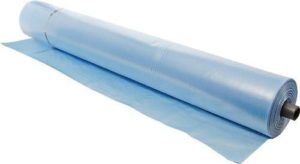
Like other plastics, polyethylene too is blamed for increasing environmental waste. However, the US Department of Agriculture has revealed that almost 30-40% of food grown in the US remains uneaten before it turns bad. It’s because the food gets wasted way before it’s eaten. Making the stay fresh for longer can help solve this problem. In fact, there are studies to back this up. Scientists have discovered that certain vegetables, such as cucumbers, can stay fresh for up to 11 days when wrapped in plastic. Likewise, fruits like bananas have been found to last for up to 21 days when wrapped in plastic. The same is true for tons of different food items, including meat and poultry.
When we look at the bigger picture, we see that growing food itself requires a massive investment of energy, land, water, and fuel. Throwing away 40% of food means draining down a considerable chunk of materials that were invested in growing them in the first place.
Using plastic not only helps to keep food fresh longer, but it also requires less energy and materials in the processing and cuts overall carbon emissions.

